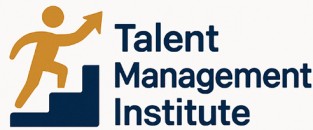
The Role of Behavioral Assessments in Talent Management
Why Behavioral Assessments Matter in Talent Management
In today's competitive job market, it’s vital to understand not just the skills and experiences of potential employees, but also their personalities and behavioral patterns. That's where behavioral assessments come into play. These tools are foundational in discerning how individuals will perform and adapt within specific roles or organizational cultures. Behavioral assessments, such as the PI Behavioral Assessment, help identify natural strengths, communication styles, and motivational drivers. Organizations use these assessments to predict behaviors across different scenarios, ensuring that the right candidates are chosen for the right positions. They measure aspects like abstract reasoning, personality traits, and cognitive ability, providing crucial insights beyond standard skill assessments. By doing so, companies can effectively align the workforce with business strategies, leading to enhanced productivity and employee satisfaction. Additionally, behavioral assessments can improve retention rates by placing employees in fitting roles where they are most likely to excel and feel satisfied. While the PI Behavioral Assessment and cognitive tests are often discussed for their practicality in selection processes, careful interpretation and integration of these results into talent management strategies are equally crucial. For further insights into how behavioral assessments can be integrated into a robust talent management strategy, explore navigating talent management complexities.What is the PI Behavioral Assessment?
Exploring the PI Behavioral Assessment
The PI Behavioral Assessment is a widely recognized tool in the talent management landscape, designed to provide a comprehensive understanding of an individual's workspace behavior. Unlike other assessments that might focus solely on cognitive abilities, this assessment delves into the behavioral traits of individuals. At its core, the PI Behavioral Assessment is composed of a series of test questions that help predict how an individual's personality aligns with specific job roles. It stands distinct with its emphasis on predictive behavioral patterns, offering insights into how someone may respond in various work situations. This assessment includes a variety of question types, covering different aspects such as cognitive reasoning and abstract reasoning. While it's not primarily a cognitive test, it indirectly evaluates an individual's cognitive ability by analyzing how they process information and make decisions. Participants are expected to respond to questions in the test, either through multiple-choice or by ranking responses, to determine their natural tendencies in a work environment. The answers given provide a raw score outcome, which reflects the individual's behavioral characteristics pertinent to their job role. One notable element of the PI Behavioral Assessment is its reliance on sample questions, which are meticulously crafted to uncover the core personality traits. When candidates engage with the assessment, they are not only answering questions, but they are also indirectly revealing their implicit workplace behavior. It's important to recognize that this assessment test is not without its challenges. Preparing for it may involve participating in practice tests, although there are multiple free resources available online to help candidates get a feel for the types of questions they might encounter. Ultimately, the PI Behavioral Assessment serves as more than just a test; it is an integral component of an organization's broader approach to talent management. For a detailed exploration of employee assessments and how they can be effectively integrated into developing talent strategies, consider reading this practical guide.Preparing for the PI Behavioral Assessment Practice Test
Steps to Prepare for the Practice Test
Preparing for the PI Behavioral Assessment can significantly aid in sharpening the skills needed to ace the test. Here's a comprehensive guide on how to approach the practice test, enhancing your confidence and really pushing up your performance:- Understand the Format: Familiarize yourself with the structure and style of the PI Behavioral Assessment. This encompasses understanding the different question types such as numerical, verbal, and abstract reasoning questions.
- Cognitive Assessment Practice: Engage in practice tests that hone your cognitive ability. These will likely include a range of cognitive test questions aimed at assessing your reasoning skills. Websites like Understanding Executive Assessment Practice Tests for Talent Management can serve as valuable resources.
- Sample Questions: Review sample questions to get an idea of what to expect during the actual test. This will give you insights into typical questions included in the assessment.
- Focus on Verbal and Numerical Reasoning: Both verbal reasoning and numerical verbal questions are common elements in the test. Concentrate on improving your aptitude in these areas by using available sample tests.
- Learn from Mistakes: When doing practice tests, reviewing incorrect answers is crucial. Understanding why certain answers are right ensures knowledge can be built around potential weak spots.
- Use Free Resources Wisely: There are plenty of free resources and practice tests available online. Utilize these to get a sense of your raw score potential without financial expenditure.
Interpreting PI Behavioral Assessment Results
Decoding the Results: A Guide to Understanding Your PI Behavioral Assessment
Interpreting the results of the PI Behavioral Assessment can be a pivotal moment in the talent management process. This assessment provides insights into an individual's personality and behavioral tendencies, which are crucial for aligning talent with organizational needs. Here's how to make sense of the results:
- Understanding the Raw Score: The raw score is a direct outcome of the assessment test, reflecting the individual's natural behavioral inclinations. It is essential to compare this score against the job requirements to determine suitability.
- Behavioral Patterns: The assessment identifies key behavioral patterns, such as dominance, extraversion, patience, and formality. These patterns help predict how an individual might react in various work scenarios.
- Predictive Behavioral Insights: The results offer predictive insights into how a person will perform in a role. This includes their cognitive ability to handle complex tasks and their reasoning skills in decision-making processes.
- Sample Questions and Answers: Reviewing sample questions and answers can help understand the types of questions asked and the reasoning behind correct answers. This practice can aid in better preparation for future assessments.
- Comparative Analysis: Use the results to compare candidates against each other. This can be particularly useful in roles requiring specific personality traits or cognitive abilities.
By effectively interpreting these results, organizations can enhance their talent management strategies, ensuring that the right individuals are placed in roles where they can thrive and contribute to the company's success.













